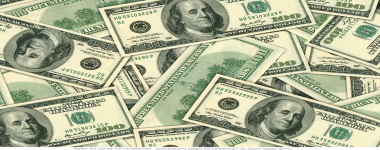by Dr. Marc Faber, Daily Reckoning
We know that “money printing” distorts the level of relative prices in an economy because, at certain times, some prices may increase faster than other prices. At other times, during another phase of monetary inflation, the prices of different goods, services and assets may increase while formerly rising prices might decline — if not in absolute terms, then in relative terms (commodity prices in the last few years).

Over the last 45 years I have observed that, in countries with high monetary inflation,real wages and incomes have tended to decline. Incidentally, this has also been the case since the turn of the millennium in the U.S., a period in which there has been a colossal expansion of money and credit.

During the great Weimar monetary inflation, real wages fell by about 50% from their pre-First World War level. Constantino Bresciani-Turroni (The Economics of Inflation, 1931) noted that the inflation influenced wages in different ways at different stages of the depreciation of the mark.
Until the summer of 1922 the principal effects were as follows:
(a) The increase in nominal wages was slower than the increase in prices caused by the monetary inflation. In other words real wages fell.
(b) As far as it concerned the workers' incomes this effect was partly offset by the decline in unemployment which accompanied the depreciation of the mark.
Bresciani-Turroni further wrote that commercial papers at the end of 1921 and 1922 showed intense activity in many industries, and in particular in those producing exports and production goods. “In that period real wages fell appreciably. The real wages of miners, which in the middle of 1921 were about 90% of the pre-war level, were scarcely 50% to 60% of the same at the end of 1922.”
Bresciani-Turroni then quoted some statistical studies, which suggested that:
“towards the end of 1922 real wages were, in the industries studied by the author, less than the subsistence minimum.”
Bresciani-Turroni further observed that, after 1922, nominal as well as real wages rose rapidly (unions gained more power, as unemployment had declined), but they never reached the pre-war level. Furthermore, as real wages rose, unemployment increased almost five-fold. Bresciani-Turroni also noted that:
A consequence of the fall in real wages was the continued fall in the ratio of wages to the total cost of production. For example, according to the results of an official inquiry in the textile industry, for most products the percentages of wages in the total cost of production was, towards the end of the inflation, much lower than the figures calculated for 1913.
As an example, in dyeing the percentage had declined from 36.9% to 27%. In the U.S., in recent years, wages and salaries have declined as a percentage of GDP while corporate profits are at an all-time high. As John Maynard Keynes opined, “It has long been recognized, by the business world and by economists alike, that a period of rising prices acts as a stimulus to enterprise and is beneficial to business men” (but not to the working class).
When, in the 1980s, I travelled frequently to Latin America I noticed that whereas most countries in the region were experiencing extremely high rates of monetary inflation and, therefore, rapidly depreciating currencies, real wages had collapsed. The result was that the high monetary inflation that Latin American central banks had created with the intention of stimulating economic activity was, instead, depressing incomes and, therefore, consumption and capital investments — in short, the entire economy.



